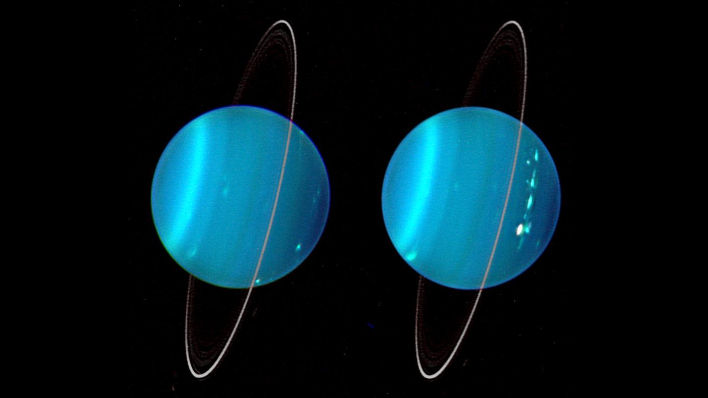Scientists Want A Deeper Probe Of Uranus To Clear Up Perplexing Traffic Jams
Uranus, the seventh planet from the Sun, is about four times wider than Earth, and is a cold and windy planet surrounded by faint rings. Voyager 2 explored the ice giant up close in January 1986, taking images of the planet and some of its moons. Since that time, scientists and astronomers have pondered over why the radiation belts of Uranus were much weaker than expected. Now, it is possible a small group of scientists have solved the dilemma.
In the recent study published in the journal Geophysical Research Letters, the group noted they used the Boris algorithm to investigate how high energy protons behave within Uranus’ unusual magnetic field. The paper adds asymmetry in Uranus’ magnetic field causes variations in the azimuthal drift component for high energy protons. This results in regions where there can be a surplus or depletion of protons, hence the traffic jam.

“This is analogous to how traffic jams form on a ring road. When cars travel slower, it causes more dense traffic; if cars travel faster, the traffic is more spread out,” remarked Matthew Acevski, an Imperial College London PhD student, and part of the study.
Acevski also hypothesized in an interview that the “magnetic asymmetry was warping the proton radiation belts, forming regions around the planet where the radiation belts were more compressed, and, thus, with stronger intensity; other regions where they were more spread out, leading to weaker intensity.”
The scientists explained if Voyager 2 had flown through a region where the radiation belts were more spread out, it could explain its observations of the weaker-than-expected radiation belts.
More data needs to be collected to provide a definitive answer to the traffic jam surrounding Uranus. It is one of many reasons NASA is planning a future mission to the icy giant as one of its highest priorities outlined in the Planetary Science and Astrobiology Decadal Survey 2023-2032.

